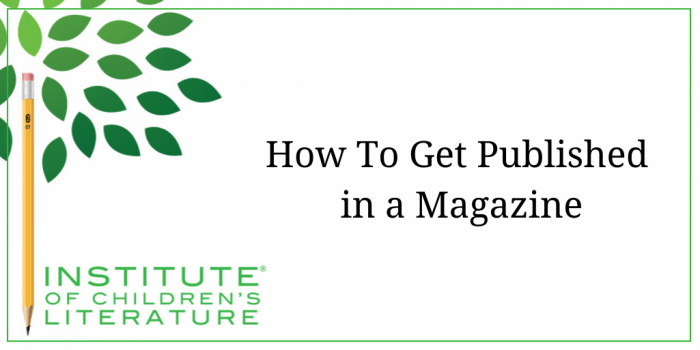1000 N. West Street #1200, Wilmington, DE 19801
© 2024 Direct Learning Systems, Inc. All rights reserved.

We teach our students how to write and get published!
View our Course Catalog >
Magazine writing differs from book writing in a number of ways, but one way is that you can learn so much about everything the magazine publishes from studying a sample. That’s not true of book publishing. Reading one book rarely tells you much about the publisher’s needs and focus. But reading one issue of a magazine can offer many useful insights.
Let’s look at a few important ones.
Basic Content and Balance
There are magazines that list fiction among the things they publish, but fiction doesn’t actually appear in every issue, and submission guidelines don’t always let you know this. But when your sample issue doesn’t contain something that is listed in the guidelines (like fiction), then you know that item may be much harder to sell. Once you have a sample issue in front of you, check out the Table of Contents. Flip through the pages making a list of everything you find inside. How many pieces in the magazine were nonfiction? How many were fiction? Only looking at samples will help you know these kinds of specifics. Look also for the byline. Pieces with no byline––the name of the writer––were probably written by the editorial team, not freelancers. So that may also be an area where they rarely buy material.
Read Each Piece
Again, sometimes guidelines will tell you fewer specifics than you can learn by actually reading the content. For instance, as you read any fiction in the magazine, try to imagine who would be the ideal reader.
Then read all the nonfiction pieces. Do they lean more heavily toward facts or experience? Experience-based nonfiction will look at a subject through the experience of a single child or the experience of the author (who may be an expert). A fact piece may include quotes but will focus more on the subject itself. Some magazines, for example, will cover sports primarily by looking at a child who participates in the sport. That means you learn of the sport through a profile of the athlete. Another magazine may look at owls through the experience of the author who discovered a sick owl and took it to a vet.
Look also at the point of the nonfiction. Does the magazine tend to use nonfiction to “teach” a life lesson beyond the facts of the piece? For example, does an article on recycling contain a message about being responsible? Learning from how the magazine’s articles approach a subject will help you avoid sending inappropriate nonfiction.
Beyond the Writing
Illustrations can also tell you a lot about how the magazine approaches subjects. The illustrations may be more classically innocent (detailed art of talking animals or sweet-faced children) or a more zany cartoon style, with both animals and human characters. The art style may be edgier (for instance: darker colors, more “trendy” clothes). How much does the style of the illustration vary from story to story? Illustrations can answer many of the same questions as the text itself and can give you a feeling for how the magazine views itself.
You should also check out the masthead for the names of the editors and compare them with the names in the market guide. You want to check for correct spelling, as well as whether the editor in question is still at the magazine. Checking names against the masthead can seem a small thing but editors do notice. And while you’re paying attention to the editors, check to see if the magazine includes a message from the editor in the issue. This allows the editor to address the reader directly and can get you a sense of how the magazine views it’s readership. What is the editor’s tone? What topics did the editor cover in the letter?
Finally, paying attention to content provided by the readers can give you a picture of the readers who are passionate about the magazine. After all, the material from the readers took time and care. What do they show you about the reader’s age and readability? Letters from the readers can also show you how the readers are reacting to the material in the magazine. The editors pay attention to that, so it’s worthwhile for writers to pay attention as well.
As you go through the issue, take notes. Some writers jot notes in their market guide, while others use a notebook so they can be more extensive in their observations. Whichever way you choose, keep in mind that a magazine sample (whether it’s an electronic sample, or one the magazine provides, or a sample you’ve found through your local library or bookstore) is a tremendous source of useful information. It just takes some creative thought to make use of it.
1000 N. West Street #1200, Wilmington, DE 19801
© 2024 Direct Learning Systems, Inc. All rights reserved.
1000 N. West Street #1200, Wilmington, DE 19801
© 2024 Direct Learning Systems, Inc. All rights reserved.
1000 N. West Street #1200, Wilmington, DE 19801
© 2024 Direct Learning Systems, Inc. All rights reserved.